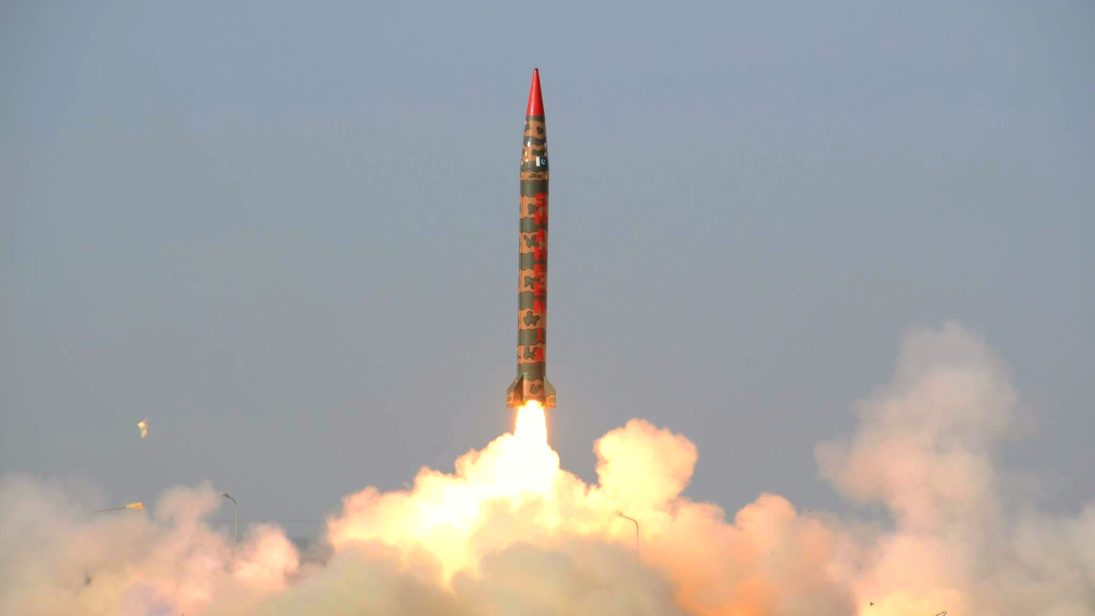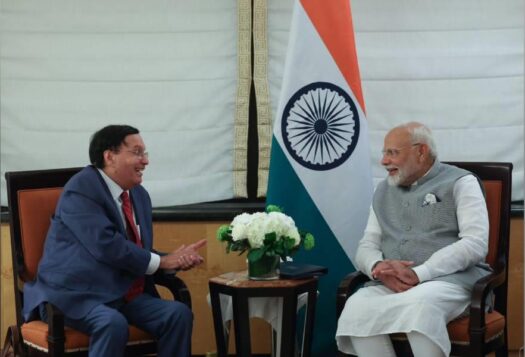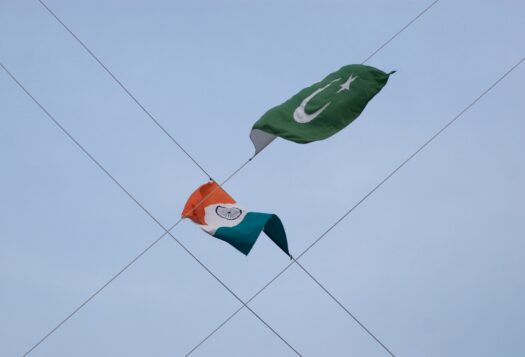
The Balakot crisis between India and Pakistan added another tumultuous chapter to South Asia’s strategic stability. In February 2019, India conducted unprecedented air strikes on an alleged terrorist camp in Balakot, inside Pakistani territory. The air strikes were in response to an attack by a Pakistan-based terrorist group in Indian-administered Kashmir, which resulted in the death of 40 Indian soldiers. Pakistan responded by shooting down an Indian fighter jet and capturing its pilot. The action-reaction cycle ignited debates about the fragility of the regional strategic environment.
The discourse that followed signaled varying and at times antithetical narratives about the strategic environment in the region. The contrasting narratives are a reflection of a perception dissonance that exists in South Asia, leading to the shifting of strategic goal posts. While Pakistan, for its part, views the strategic environment as unstable, India has become more confident of the growing strategic stability in the region. Balakot has helped reaffirm India’s belief that its strategic stability in the region provides it with a conventional window to strike Pakistan with minimal escalatory risk. Such contrasting and dissonant interpretations of strategic stability produce divergent strategic calculi that not only have bearing on the nuclear postures of both sides, but also make the region vulnerable to an aggressive arms race.
Stability and Instability
The problem of binary interpretations and contrasting perceptions in South Asia goes back to the 1998 nuclear weapons tests by both Pakistan and India. For Pakistan, India’s conventional superiority always posed an existential threat, but with an overt nuclear capability this threat perception increased manifold. Making matters worse, the United States no longer had the geopolitical rationale to support Pakistan after the Soviet withdrawal from Afghanistan in 1988-89. The minimal diplomatic support it received from the United States during the 1999 Kargil war amply demonstrated the U.S.’s unwillingness to provide support to Pakistan in the future.
For Pakistan, instability at the nuclear level provides protection from Indian threats. A highly stable strategic environment in which nuclear escalation is unlikely would undermine the efficacy of Pakistan’s nuclear deterrent.
These diplomatic setbacks may have convinced Pakistan of its inability to catalyze superpower intervention in case of an armed standoff with India. With its understanding of an unstable nuclear environment, Pakistan sought to ease its security vulnerability by adopting an aggressive nuclear posture. Pakistan took steps towards adopting a doctrine where it could quickly respond to even limited conventional incursions by lowering its nuclear threshold. The most credible way for Pakistan to deter India, as Feroz Khan believes, is to threaten the first-use of tactical nuclear weapons on advancing Indian forces. For Pakistan, instability at the nuclear level provides protection from Indian threats. A highly stable strategic environment in which nuclear escalation is unlikely would undermine the efficacy of Pakistan’s nuclear deterrent. As a former Pakistani ambassador to the United States puts it, “central to Pakistani strategy has been the recognition that it is always possible for a conventional conflict to get out of hand.” This recognition does not only deter India, but also signals to the international community that a nuclear conflict is possible.
While Pakistan perceives the strategic environment as inherently unstable, India, on the contrary, has based its strategic calculus on the understanding that, after 1998, South Asia enjoys a stable nuclear environment. Indian analysts and policymakers consider the possibility of nuclear escalation low. So long as India refrains from hitting Pakistan’s core interests, analysts argue, Pakistan will not launch its nuclear weapons. India believes its declaratory posture of massive assured retaliation is sufficient to deter Pakistan from hitting the nuclear button, both tactical and strategic.
Tellingly, Indian and Pakistani policymakers drew contrasting lessons from the Kargil war and Operation Parakram (the Indian military mobilization that occurred as a result of the Twin Peaks Crisis in 2001-2002). For India, the Kargil war proved that a limited regional war could be fought without risk of escalation. Sumit Ganguly writes that the Indian side became confident that regional conflicts like Kargil could conclude without threat of a nuclear escalation.
Furthermore, Prime Minister Vajpayee told President Clinton that India was preparing to expand the conflict horizontally across multiple theaters in Kashmir. However, the slow and massive military build-up during Operation Parakram gave Pakistan enough time to move its forces to the eastern border while also using diplomatic tools to catalyze international pressure for deescalation. This reinforced the evolving belief that India must acquire rapid mobilization capability of its strike corps. Some scholars argue that these events at Kargil and Operation Parakram convinced India that a “limited war” was feasible. On December 29, 2001, then Indian Defense Minister George Fernandes said, “Pakistan can’t think of using nuclear weapons despite the fact that they are not committed to the doctrine of no first use like we are. We could take a strike, survive, and then hit back. Pakistan would be finished. I do not really fear that the nuclear issue would figure in a conflict.”
For Indian strategists, the Kargil war and Operation Parakram solidified India’s perception of stability at the strategic level. As General V.P. Malik put it, “space exists between proxy war/low-intensity conflict and a nuclear umbrella wherein a limited conventional war is a distinct possibility.” Out of this strategic belief grew the Indian military doctrine of “proactive limited conflict” (popularly known as Cold Start) that would enable India to swiftly launch a conventional strike in Pakistan. Notwithstanding Indian capability to execute Cold Start, Pakistan’s military leadership seems convinced that Cold Start is India’s strategic doctrine post 2001.

Dissonance and Competing Nuclear Postures
Dissonant understandings of the regional strategic environment may lead to more aggressive nuclear postures and perhaps a spiralling arms race. India believes that regional strategic stability permits the launching of punitive conventional strikes in the case of terror attacks led by Pakistan-supported militant groups. As one senior Indian official asserted, “there is a lot of strategic space between a low-intensity war waged with Pakistan and the nuclear threshold.” The surgical strikes in 2016 and air strikes on Balakot are clear examples of India’s growing confidence in the strategic stability of the region. Such incidents can have the effect of ratcheting up the breadth of options for retaliation in future crises, potentially preventing one or both sides from selecting a punitive military option lower on the escalation ladder. The Indian public, having applauded the air strikes, may come to expect similar or more aggressive action in the future. If shooting down an Indian aircraft satisfied the nerves of disenchanted Pakistanis, then they would expect a similar reprisal in the future. Such actions can therefore lead to commitment traps on both sides.
Any nuclear posture is credible only when the concerned state is able to demonstrate its capability to execute such posture. Such an exercise of asserting credibility to an aggressive posture can accelerate an arms race, both conventional and strategic.
Divergent understandings of the region’s strategic environment may also lead to aggressive nuclear postures and an arms race. As stated earlier, Pakistan’s first-use posture to deter a conventional attack by India is largely informed by its perception of an unstable nuclear environment in the region. Any nuclear posture is credible only when the concerned state is able to demonstrate its capability to execute such posture. Such an exercise of asserting credibility to an aggressive posture can accelerate an arms race, both conventional and strategic. For its posture to look credible, Pakistan has started to deploy short-range Nasr missiles near the border. The deployment has also been confirmed through the available satellite imagery. In February 2019, India test fired its latest version of the short-range quick reaction surface to air missile (QRSAM). The QRSAM air defense system can neutralize multiple incoming targets and is touted as India’s answer to Nasr missiles.
At least two nuclear scholars maintain that Pakistan’s deployment of battlefield weapons, among other factors, has led India to explore a credible, preemptive counterforce option. Weeks after Balakot, India’s claim of intercepting its own satellite with a kinetic kill vehicle may have been an attempt to signal its counterforce thinking. The ballistic missile defense (BMD) that India is developing will only extend these strategic intentions.
India’s counterforce thinking has already triggered similar strategic thinking in Pakistan. Pakistan claims that its new missile delivery system, Ababeel, is multiple independent re-entry vehicle-capable. Such a weapon could be used to enhance the survivability of Pakistan’s ballistic missiles in the growing regional BMD environment, but can also be used as a counterforce weapon itself. Such a spiraling arms race is dangerously fraught with risks of inadvertent conflict escalation.
South Asia suffers from a strategic environment in which both India and Pakistan hold contradictory interpretations, making conflict escalation a distinct possibility in any future India-Pakistan confrontation.
***
Click here to read this article in Urdu.
Image 1: pxhere
Image 2: Prakash Singh via Getty


